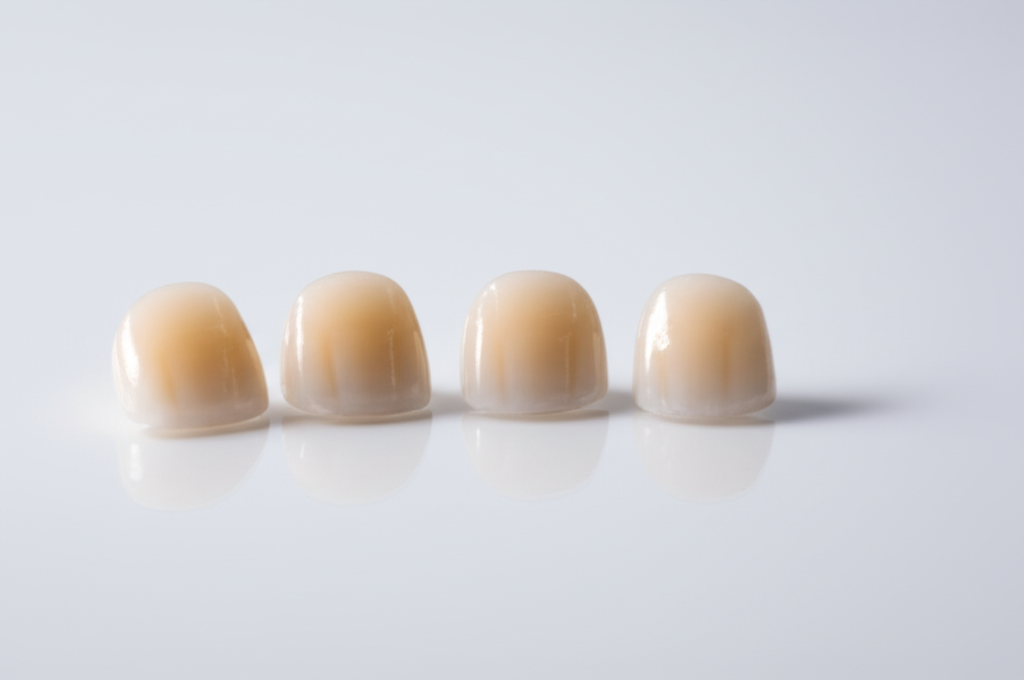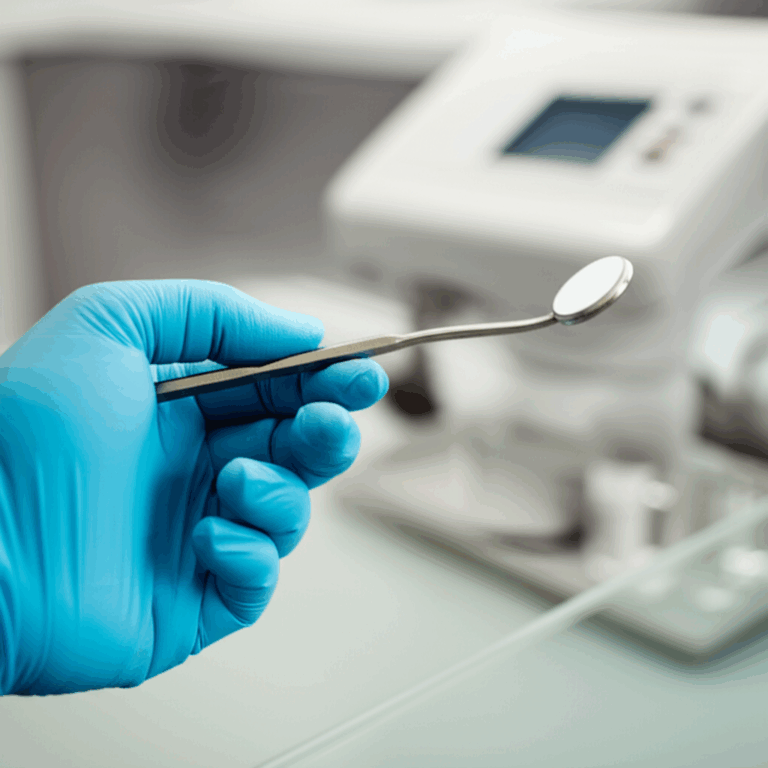
How Much Would 6 Porcelain Veneers Cost? A Practical, Honest Price Guide
That awkward moment—you catch your reflection, wish your front teeth looked just a bit brighter, straighter, more… “magazine cover.” You’ve heard about porcelain veneers. But then the worry creeps in: Can I really afford them? How much would 6 porcelain veneers cost, anyway? If that question brought you here, you’re in the right place. Let’s break down the numbers, clear away the confusion, and help you make a smart choice with total confidence.
In This Article
- What Do 6 Porcelain Veneers Really Cost?
- Why Does the Cost Vary So Much?
- What Actually Goes Into the Price?
- How Can I Make Veneers More Affordable?
- Are There Cheaper or Alternative Options?
- Who’s the Best Candidate for Porcelain Veneers?
- What Should I Ask My Dentist?
- Your Takeaway: Smile Investments Are Personal
What Do 6 Porcelain Veneers Really Cost?
Let’s answer the big question first—you shouldn’t have to dig for it. If you’re thinking about veneers for your smile’s six most visible teeth (usually your top front ones), expect to pay anywhere from $6,000 to $24,000 in the United States. Yes, that’s a pretty big range. That means, on average, you’ll see prices between $1,000 to $4,000 per tooth.
Is that normal? Yep, totally normal. But why does the price change so much? Let’s sort that out.
Why Six Veneers?
If you look in the mirror and smile, those 6 top front teeth usually make up your “smile zone.” Doing veneers here can really change how your whole smile looks—no wonder it’s so popular.
Why Does the Cost Vary So Much?
Think of pricing veneers like picking a hotel room: it depends where it is, the extras, and who’s serving you! Here are the big reasons why costs change:
1. Dentist’s Know-How & Where You Live
The training and experience of your cosmetic dentist make a huge difference—just like a famous chef charges more. Dentists in big cities like New York or LA ask for higher fees. In smaller towns or country areas, you might pay less.
| Location | Cost Per Veneer |
|---|---|
| Major city (NYC/LA) | $1,800–$4,000+ |
| Suburbs/rural | $1,000–$2,500 |
2. Material & Type of Veneer
Not all porcelain is the same. The most used types are:
- Standard porcelain: Good, looks natural, not too pricey.
- Emax veneers: Strong and clear, great for front teeth.
- Zirconia: Super tough, good for people who bite hard, covers deep stains, a bit less see-through than Emax.
- Lumineers & other “no-prep” brands: Very thin, sometimes cost more because of the brand.
Easy example: It’s like car shopping. Want the simple car? Or the one with cool extras? Your choice changes the price.
3. Customization & Artistic Work
You’re not buying from a shelf. Each veneer is made special for your own smile and face—so it looks just right on you. Good-looking veneers need both skill and an eye for detail.
4. Work Before Veneers
If you need work done like fixing cavities or gum problems before getting veneers, add that to your bill.
- Fillings? $100–$400 each.
- Deep cleaning? $75–$200.
- Gum shaping? $200–$500 per tooth.
5. What’s Included?
Check what you get for your money:
- First visit and planning
- Digital smile previews or pictures
- Prep work & temporary veneers
- Putting in your permanent veneers
- Check-ups after
Some dentists make package deals. Some list every step. Always ask for a full price.
What Actually Goes Into The Price?
Let’s see what you’re paying for when you buy 6 porcelain veneers:
- Good quality porcelain like Emax or zirconia costs more.
- Careful, detailed work makes all the difference.
- Your veneers are made by special workers at a dental ceramics lab.
- Things like digital pictures and teeth scans—these help the work go smoothly.
- Numbing your mouth, making sure you’re comfy, even “try-on” smiles to check your new look.
Table: Porcelain Veneers Average Price Breakdown
| Step in Process | Typical Cost (per 6 veneers) |
|---|---|
| Dentist’s planning time | $400–$1,000 |
| Lab and materials | $2,400–$9,000 |
| Prep, temp, bonding | $1,000–$2,000 |
| Follow-ups, adjustments | $200–$600 |
| Total (estimate) | $6,000–$24,000 |
How Can I Make Veneers More Affordable?
A great smile is worth it—but you don’t have to pay all at once. Here’s how real people make 6 porcelain veneers fit the budget:
1. Pay Over Time
- Payment plans: Many dentists let you pay monthly, sometimes without added fees.
- CareCredit or Patient Loans: Special credit cards for health costs, sometimes zero interest at first (make sure to read the small print).
2. Dental Insurance
Most plans do not pay for veneers if it’s just for looks. But if you need to fix a broken tooth, your insurance might pay some. Always check with your insurance first.
3. Use HSAs & FSAs: Pay Before Taxes
Health Savings Accounts (HSAs) or Flexible Spending Accounts (FSAs) let you pay for dental work before taxes are taken out. That can save you money.
4. Ask About Deals
Sometimes you can get a “package price”—like six or eight veneers for less per tooth. Always ask if your dentist has deals for doing more than one tooth.
5. Get More Than One Quote
Prices can be different in the same area, so see more than one dentist. Get clear, written quotes. Don’t choose just because it’s cheap—it’s your smile!
Are There Cheaper or Alternative Options?
Porcelain veneers look amazing, but you can try other choices if you want to spend less or just see how things look first:
Composite Veneers (Bonding)
- Cost: $250–$1,500 per tooth
- Pros: Quick, cheaper, easy to fix.
- Cons: Don’t last as long (5–7 years), easier to stain, may not look as natural as porcelain.
Teeth Whitening
- Cost: $100–$600
- Pros: Brightens up your smile fast, doesn’t hurt.
- Cons: Only changes color, doesn’t fix chips or uneven teeth.
Dental Crowns
- Cost: $800–$3,000 per tooth
- Best for: Teeth that are badly damaged or had root canals.
- Cons: Dentist removes more tooth than with veneers.
Braces or Aligners
- Straighten your teeth naturally
- Cost: $3,000–$8,000+
- Best for: Fixing crowded or gapped teeth.
- Cons: Takes longer, can’t change shape or color of each tooth.
Who’s The Best Candidate for Porcelain Veneers?
Porcelain veneers are great—but not for everyone.
Good for:
- Healthy teeth and gums
- Small chips, gaps, uneven shapes, or tough stains
- People who want a long-term fix
- People who brush and visit the dentist often
Not good for:
- Big bite or jaw problems (might need braces first)
- Ongoing gum disease or untreated cavities
- People who grind teeth at night a lot (unless you’ll wear a night guard)
Simple rule: Veneers do what whitening and bonding can’t—change color for good, fix shape and size, and give that super bright smile.
What Should I Ask My Dentist?
Don’t “buy” a smile makeover without asking questions. When you meet your dentist, ask things like:
Your Takeaway: Smile Investments Are Personal
Let’s keep it simple:
- Cost for 6 porcelain veneers: $6,000–$24,000 (usually $1,000–$4,000 each)
- Why does the price change? Dentist’s skill, where you live, type of material, lab work, and extra dental work
- There are other options—ask about bonding, whitening, crowns, or straightening for other needs or budgets
- Insurance mostly won’t pay for just-because-you-want-it veneers (unless you need to fix a problem)
- Paying over time, HSAs/FSAs, and package deals help
- Pick your dentist for trust and skill, not just price
Veneers are an investment in how you feel. If you want to look better for a big moment or just feel more sure of your smile, you deserve clear, caring answers.
Next steps:
- Write down what matters most to you for your smile
- Meet with a good cosmetic dentist—bring your questions!
- Take your time; go with someone you trust
Want to know how dental labs really shape your new look? Find out how a dental ceramics lab builds really lifelike veneers, or see why the right veneer lab is a big deal for great results.
Frequently Asked Questions: The Short Answers
Q: Should I get veneers just for my 6 front teeth?
A: For most, six veneers are enough for the visible part of your smile. Your dentist can help you decide if you need more.
Q: How long do porcelain veneers last?
A: Usually ten to fifteen years, sometimes more with good care—brush and see your dentist!
Q: Do veneers stain or break easily?
A: Good porcelain doesn’t stain much, but nothing’s perfect. Don’t bite hard stuff or open things with your teeth.
Q: Is the treatment painful?
A: Most people say it doesn’t hurt, because the dentist numbs your mouth.
The Bottom Line
Getting porcelain veneers is a big step, but knowing what controls the price, what your choices are, and how to get a fair quote puts you in the driver’s seat. Your smile is yours—make sure you feel good about making it even better.
Still have questions or want more info? Keep looking around, and get a dentist’s advice that fits you best. You’re not just getting new teeth—you’re getting a fresh boost of confidence every time you smile.
Checked by a licensed dentist
(For more help, check out our dental practical guide or explore options with a trusted dentist.)
Your smile, your choice. Let’s make it a great one—together.








